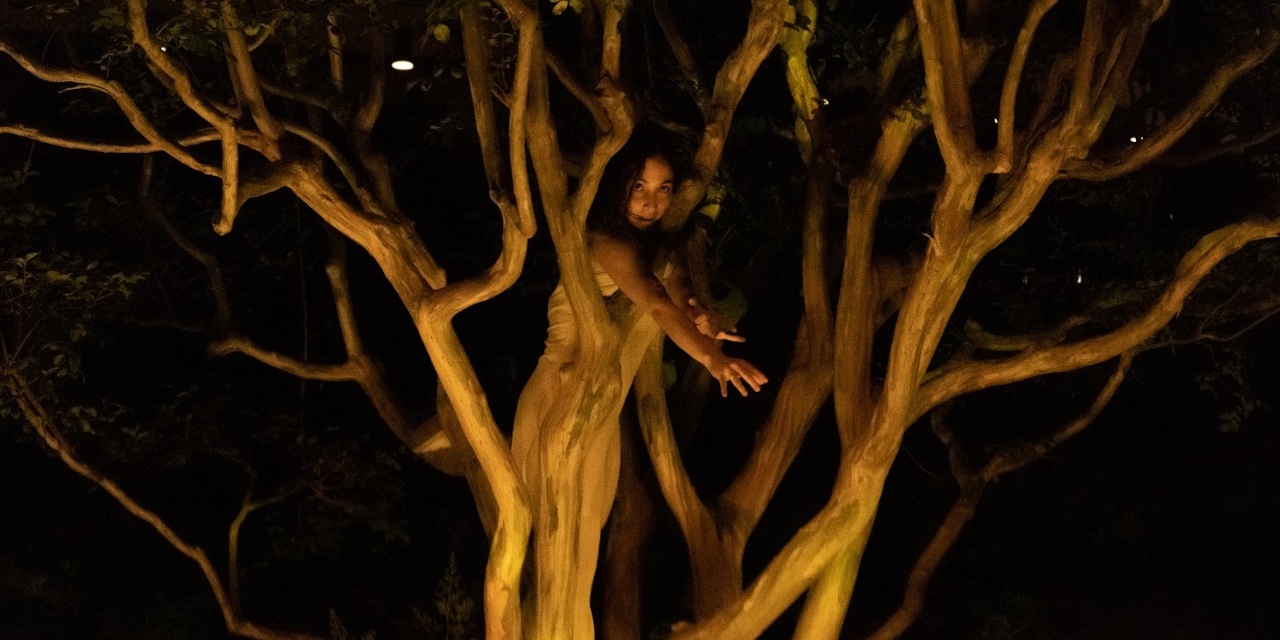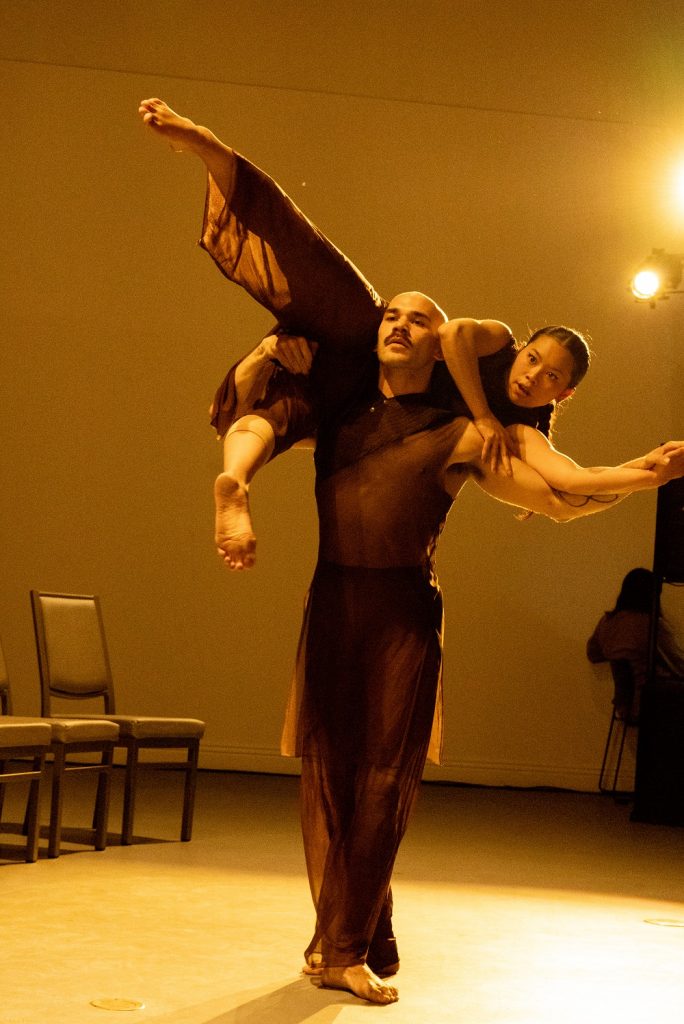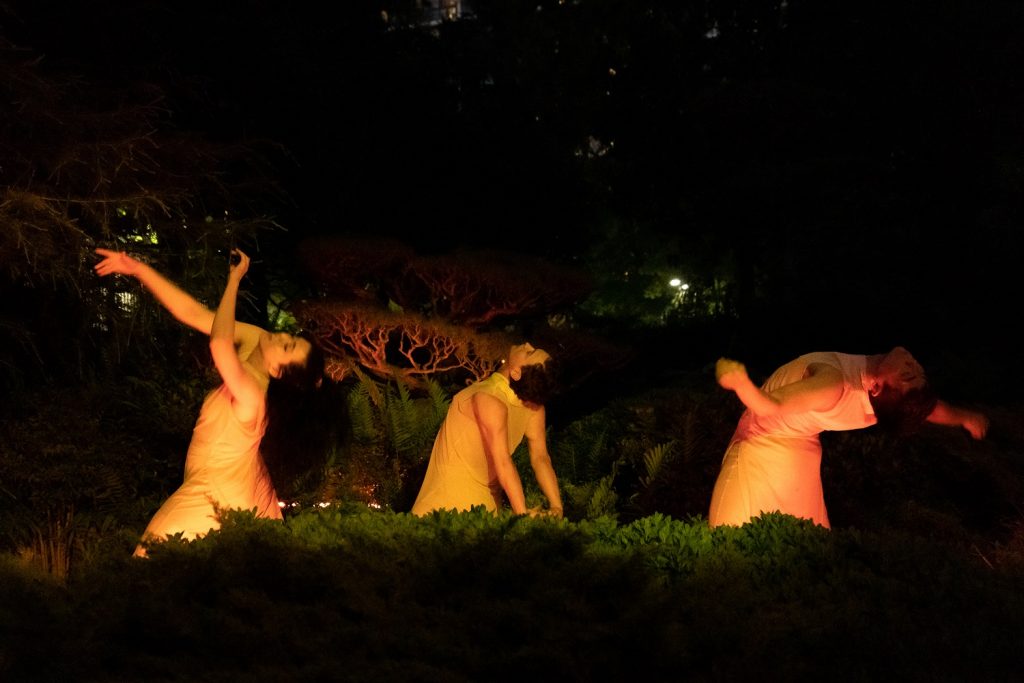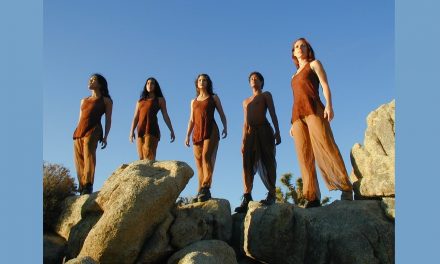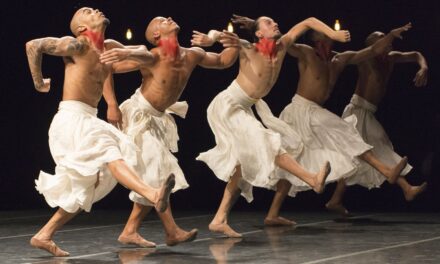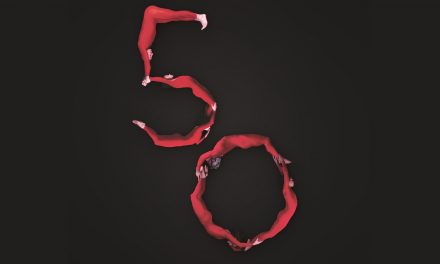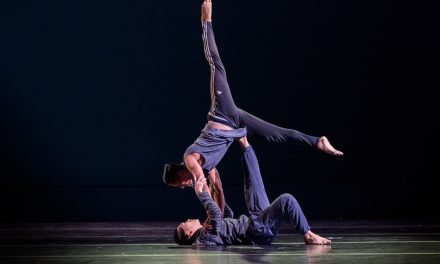“SEED” is described in the program as “a multidisciplinary, multilocational, multigenerational performance piece that explores the collision of contemporary dance, projection mapping, and Ikebana – the Japanese art of flower arranging.” As performed by the Entity Contemporary Dance Company and Ikebana master artist Haruko Takeichi, “SEED” examines the ephemerality of beauty and the cycles of fragmentation, destruction, and rebirth within both nature and society.”
As the evening began, I was welcomed into the Japanese American Culture and Community Center, a cultural oasis and extraordinary park in the middle of Little Tokyo. After an offering of Asian cocktails outdoors in the middle of the large, beautiful Zen Garden, complete with ornamental trees, bushes and babbling brook, I was invited inside the gathering hall.
A lone dancer, dressed in beautiful sheer tan crepe pants and tunic, began a silent dance of artfully expressive movement in the middle of the crowd. While she danced and recited a Japanese haiku, soft rhythmic techno music began to grow louder, filling the dark hall. Over in about 10 minutes, the dancer walked through the crowd mysteriously disappearing into the garden, leaving us wondering what might come next.
We were divided into two groups, and being part of the yellow wrist band gang, I made my way to the upstairs gallery for the next part of the evening. We entered a large open gallery room with two rows of seats on either side of a diagonal aisle. The aisle ended with a large wooden branch sculpture engulfing a still male body, dancer Derek Tabada.
As we took our seats, a young woman, Vickie Roan, in the sheer tunic and pants uniform, was joined by an elderly woman, Ikebana artist, Haruko Takeichi, wearing a glamorous pleated green shawl. Together they walked down the center aisle to the wooden sculpture. Roan left Takeichi to attend to her flower arranging, known as Ikebana, just as Tabada crawled out of the art piece joining Roan, in a lyrical yet modern pas de deux. The soft classical music was low enough to hear them breathing heavily as they danced so close to the audience, we could almost touch them.
Several women dressed in black samurai-style outfits offered Takeichi leaves and flowers, as she assembled her floral display. The classical music changed to a pulsing techno beat, while the couple danced across the aisle in a synchronized series of crawling movements and turns.
With each phase, the choreography became more complex as each pass made a new physical statement. Rolling over each other, Roan and Tabada, artfully performed the various jazz and modern styles with breath-taking lifts and extensions. Occasionally they interacted with the audience, teasing them by offering flowers, then taking them back. This added moments of humor, as they explored audience members’ hands or exchanged a hand signal. Once the flower arranging concluded, Roan climbed into the sculpture, replacing Tabada’s space in the opening, as he left the stage.
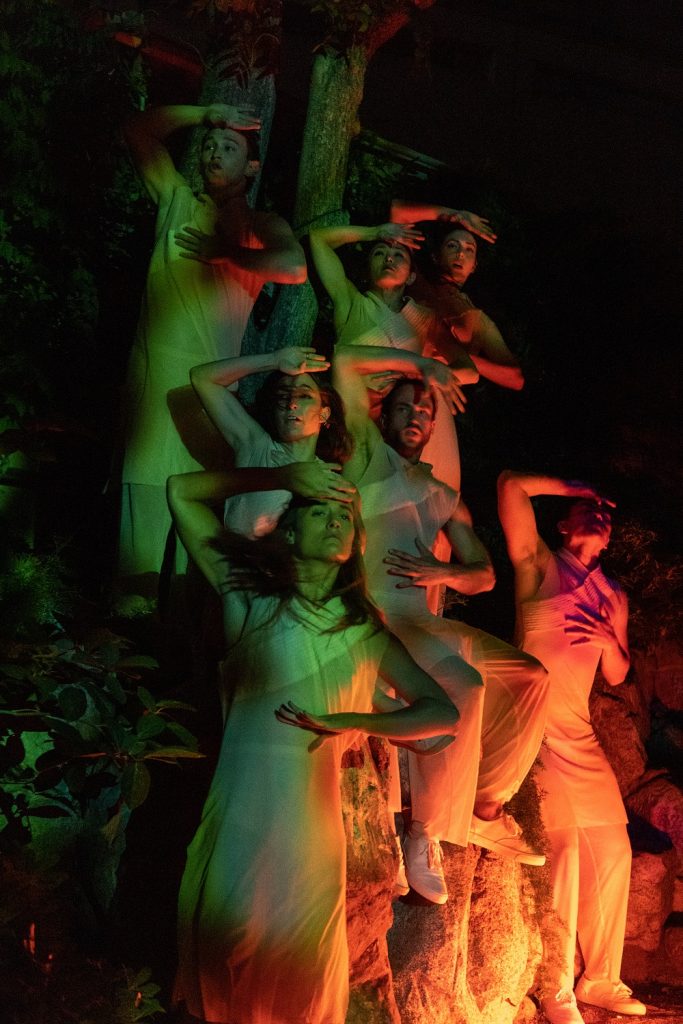
Kent Boyd, Eugenia Rodriguez, Shiori Kamijo, Diana Schoenfield, Grayson McGuire, Emily Crouch, Jason Martin in SEED – Photo by Mia Harris
There was a short intermission while we navigated our way back downstairs into the garden, finding our seats under the dark night sky. Airplanes flying overhead sporadically interrupted the peaceful forest. A single tree was lit with a moving light projection, while a dancer caressed the tree, dance-climbing into the fragile branches to the slow rhythmic classical style music. More dancers gathered under the stars, as they navigated the sandy paths towards the tree. The classical music morphed into a dance-club rhythm, as a trio moved in unison, Vogue-ing in the projected lighting. Slowly, the music became the soothing sound of water dropping, while liquid projections transformed the garden into a shimmering pond.
As rhythmic music played, the performers, playfully danced in the bushes and trees, while the garden continually transformed with each new set of light projections. A bridge over a running brook became a stage for three acrobatic male dancers until eventually, all seven dancers joined together traversing the garden paths and running through the audience, breathing loud enough for all to hear. Sitting amongst the dancers, it felt as if one was a voyeur in a nature ritual. With pulsing music, the dancers emulated the diverse flora and fauna, while dancing in unison throughout the garden in a spiritual ode to nature.
Unfortunately, many times the dancing was hidden behind the bushes and trees, making it difficult to see because of the darkness and distance. Often one just saw partial torsos and arms, unless there was a slow lift revealing the full body of the dancer. As the group disappeared one by one into the garden, the lights slowly faded to blackness. The seven brilliant garden dancers were Diana Schoenfield, Emily Crouch, Eugenia Rodriguez, Grayson McGuire, Jason Martin, Kent Boyd, Shiori Kamijo.
Each section of the show was unique to itself yet bound together by an emphasis on nature. The gallery piece emphasized the art of the flower arranging with the duet, while the garden piece highlighted the seven dancers becoming part of nature.
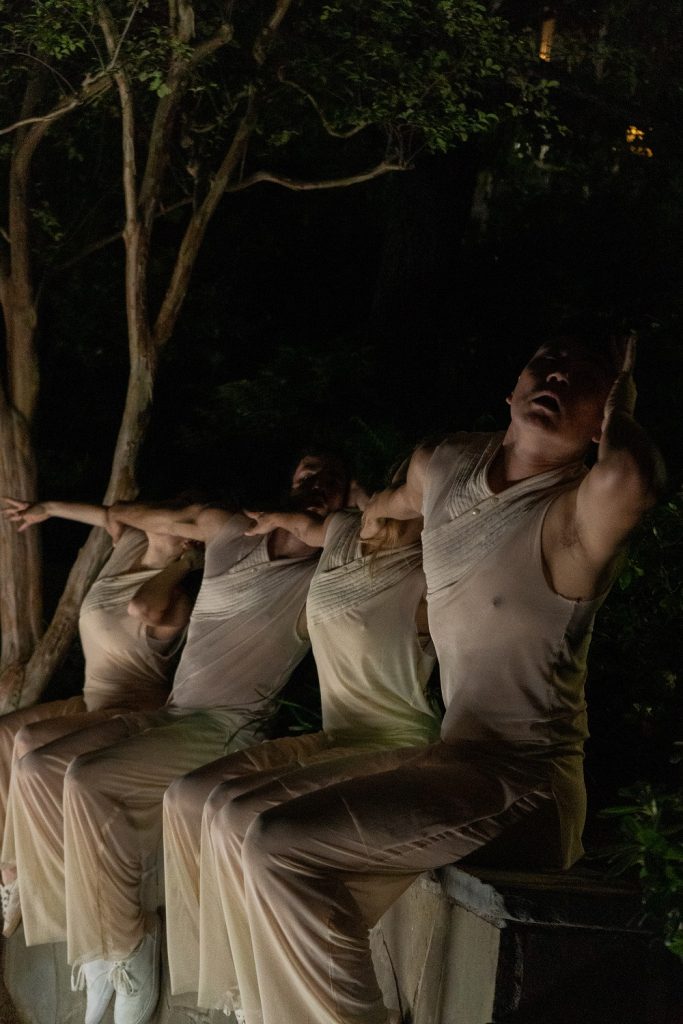
(front to back) Jason Martin, Emily Crouch, Grayson McGuire, Eugenia Rodriguez in SEED – Photo by Mia Harris
The choreography and direction by Will Johnston and Marissa Osato was amazing and quite enchanting. The technically skilled dancers deftly handled all the modern, almost ritualistic styles. Costumes by Mike Esperanza were elegant and flowing, enhancing the dancers bodies. The many genres of music by Matt Cady informed the choreography without distracting. Lighting and outdoor projections by Caroline Marks and Akiko Yamashita brought the garden alive, but could have been brighter, as so much of the dance was lost in darkness. I believe the creators’ intent was to bridge the connection between dance and nature, and by the end of the piece, it was fully achieved and entertainingly unique. I look forward to seeing what this company has in store in the future.
For more information on Entity Contemporary Dance Company, please visit their website.
To learn more about the Japanese American Culture and Community Center, please visit their website.
Written by Anthony Marciona for LA Dance Chronicle.
Featured image: Eugenia Rodriguez in SEED – Photo by Mia Harris

